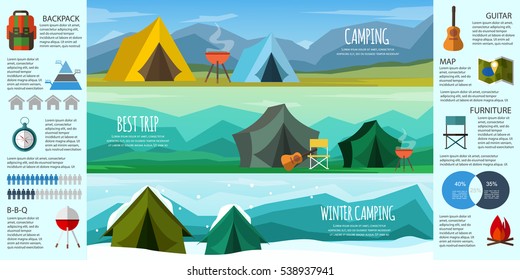Winter season camping is an enjoyable and adventurous experience, yet it requires correct gear to guarantee you stay cozy. You'll need a close-fitting base layer to catch your temperature, in addition to a shielding coat and a water resistant shell.
You'll also need snow stakes (or deadman supports) hidden in the snow. These can be tied utilizing Bob's creative knot or a normal taut-line hitch.
Pitch Your Camping tent
Wintertime outdoor camping can be a fun and adventurous experience. Nevertheless, it is necessary to have the proper gear and understand just how to pitch your outdoor tents in snow. This will avoid cold injuries like frostbite and hypothermia. It is additionally crucial to eat well and remain hydrated.
When establishing camp, ensure to pick a website that is sheltered from the wind and free of avalanche threat. It is likewise a good concept to load down the area around your tent, as this will certainly help in reducing sinking from temperature.
Before you set up your tent, dig pits with the very same dimension as each of the anchor points (groundsheet rings and man lines) in the center of the outdoor tents. Fill up these pits with sand, stones or even things sacks full of snow to compact and secure the ground. You might likewise want to take into consideration a dead-man anchor, which involves linking outdoor tents lines to sticks of wood that are buried in the snow.
Load Down the Location Around Your Camping tent
Although not a requirement in many locations, snow risks (also called deadman supports) are an exceptional addition to your outdoor tents pitching set when camping in deep or pressed snow. They are essentially sticks that are designed to be hidden in the snow, where they will ice up and produce a strong support point. For ideal outcomes, use a clover drawback knot on the top of the stick and hide it in a couple of inches of snow or sand.
Establish Your Outdoor tents
If you're camping in snow, it is a great idea to utilize a camping tent created for wintertime backpacking. 3-season camping tents function great if you are making camp listed below tree zone and not expecting especially severe weather, yet 4-season outdoors tents have tougher poles and fabrics and offer more protection from wind and hefty snowfall.
Make certain to bring appropriate insulation for your resting bag and a warm, dry inflatable floor covering to sleep on. Blow up mats are much warmer than foam and help prevent cool areas in your camping tent. You can also include an additional mat for resting or food preparation.
It's also a great idea to set up your outdoor tents close to an all-natural wind block, such as a team of trees. This will make your camp much more comfy. If you can not find a windbreak, you can produce your very own by excavating openings and burying items, such as rocks, camping tent risks, or "dead man" anchors (old tent person lines) with a shovel.
Restrain Your Outdoor tents
Snow stakes aren't essential if you utilize the right strategies to secure canvas your camping tent. Hidden sticks (maybe gathered on your technique hike) and ski poles function well, as does some variation of a "deadman" buried in the snow. (The concept is to develop an anchor that is so strong you will not have the ability to pull it up, despite a great deal of initiative.) Some manufacturers make specialized dead-man anchors, however I favor the simplicity of a taut-line hitch connected to a stick and afterwards buried in the snow.
Know the terrain around your camp, specifically if there is avalanche threat. A branch that falls on your tent might harm it or, at worst, wound you. Additionally be wary of pitching your tent on a slope, which can catch wind and bring about collapse. A sheltered area with a reduced ridge or hillside is far better than a steep gully.
